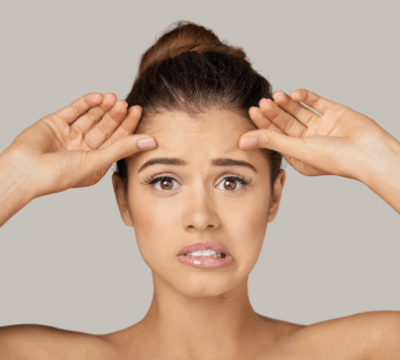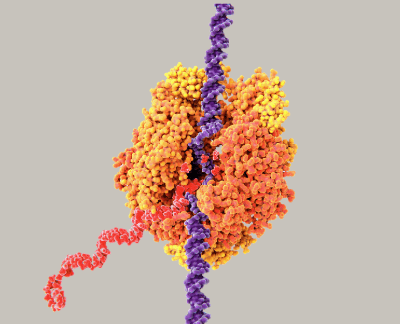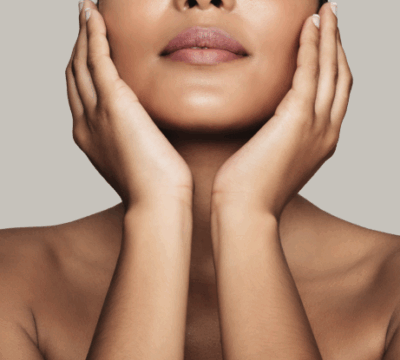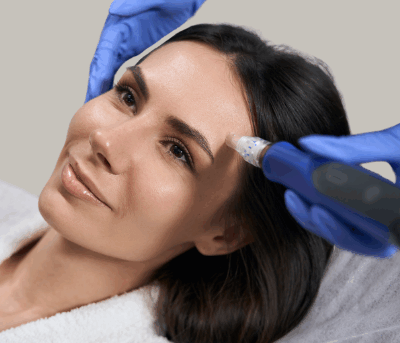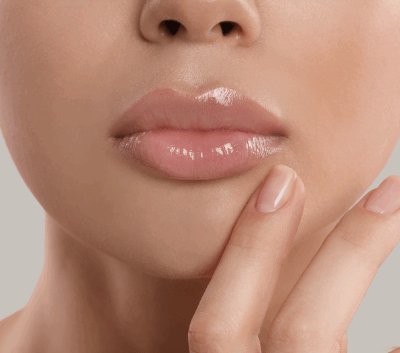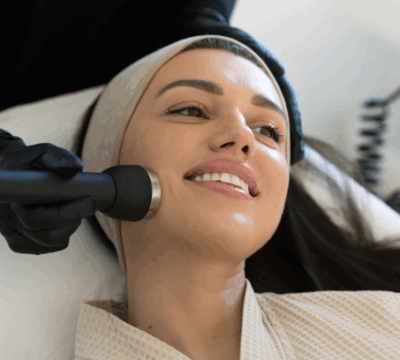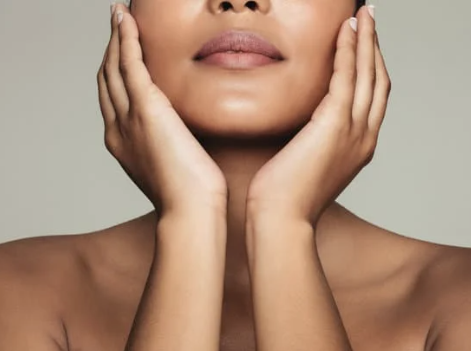
SKIN CONDITIONS
Your Skin, Optimised. Healthy skin isn’t just about how it looks — it’s about how it functions. At MyAesthetics, we focus on the long-term health and resilience of your skin with a range of high-performance, medical-grade treatments. From deeply hydrating boosters and collagen-stimulating technologies to active skincare plans, every protocol is designed around your unique skin goals. Expect clinically proven tools like polynucleotides, exosomes, and microneedling — all chosen for real, visible change you can see and feel.
Enlarged Pores
Pores are the tiny openings on the surface of your skin that are connected to hair follicles and sebaceous glands. They play an essential role in allowing sweat and sebum (oil) to reach the skin’s surface, helping to regulate hydration and temperature. While pores naturally cover the entire face and body, they typically go unnoticed unless they become enlarged—at which point they may appear as small, visible dots. Enlarged pores are most commonly seen on the face, particularly around the nose, cheeks, forehead, and chin.
Enlarged pores can result from a variety of factors. As we age, the skin gradually loses collagen and elastin—proteins essential for maintaining firmness and structure. This loss leads to a decrease in skin elasticity, causing pores to appear larger. Sun exposure accelerates collagen breakdown, further contributing to pore enlargement, as well as premature ageing and uneven pigmentation. Oily skin is another common factor; excess sebum production can stretch the pores and combine with dirt and debris, leading to congestion and more visible pores. Genetics also play a significant role—individuals with naturally oilier or thicker skin tend to have more prominent pores, particularly in areas like the nose, cheeks, and forehead.
A well-recommended, medical-grade skincare regime is essential for healthy, well-functioning skin. Topical ingredients like retinoids help regulate oil production and stimulate collagen and elastin, gradually improving enlarged pores. At MyAesthetics, we stock leading medical-grade products, including ZO Skin Health.
Our expert team also offers targeted in-clinic treatments such as medical-grade facials, HydraFacial, and medical microneedling—all designed to refine skin texture and reduce visible pores.
Breakouts
Breakouts, commonly known as acne, refer to the appearance of spots and pimples on the skin. These can include six different types of blemishes, ranging from inflamed pustules (whiteheads) and deeper cysts or nodules to blocked pores and comedones (blackheads). Breakouts can also appear on the chest, shoulders, and back.
Up to 85% of people will experience breakouts at some point in their lives—most commonly during adolescence or young adulthood. However, adult acne is also prevalent, especially among women, with up to 40% of adult women affected due to a combination of internal and external factors.
Breakouts at any age can significantly impact a person’s confidence, prompting many to seek effective treatments not only to control active acne but also to prevent long-term marks or scarring.
Breakouts are typically caused by a combination of internal and external factors. Genetics and hormonal changes—particularly those that increase oil production—are among the most common internal contributors. When excess sebum combines with dead skin cells and bacteria, it can block pores and trigger inflammation, leading to the formation of spots.
During adolescence, breakouts tend to concentrate in the T-zone (forehead, nose, and chin). In adulthood, they are more commonly found on the lower cheeks and jawline, especially around the menstrual cycle in women.
External influences such as diet, stress, and changes in skincare or cosmetic products can also increase the likelihood of breakouts or exacerbate existing acne.
For those with acne-prone skin, a consistent, tailored skincare routine is essential to reduce breakout frequency and severity. Medical-grade ingredients like retinoids, salicylic acid, and benzoyl peroxide help regulate oil, clear pores, and reduce inflammation.
Lines & Wrinkles
Lines and wrinkles can develop on the skin of the face and body, ranging from fine lines to deeper creases. Many people find facial wrinkles concerning as they often contribute to a tired or aged appearance. Wrinkles can affect various areas, each with specific names such as forehead lines, frown lines, crow’s feet, bunny lines, nasolabial folds, marionette lines, and lip lines.
The way lines and wrinkles form varies between individuals. Their development is often influenced by repeated facial movements, sleeping positions, and the natural loss of collagen and elastin. Additionally, volume loss and the descent of fat pads in the face as we age contribute to the appearance and pattern of wrinkles.
The primary cause of lines and wrinkles on the skin is the natural ageing process. The skin produces collagen, elastin, and hyaluronic acid, which begin to decline gradually from your mid-twenties at a rate of approximately 1–1.5% per year. This decline accelerates up to six times faster during menopause in women, resulting in significant changes to the skin’s texture and appearance across the body. As collagen and elastin decrease, you may notice the development of lines and wrinkles, pigmentation, enlarged pores, and a dull complexion. Additionally, facial fat loss and the gradual downward descent of tissues over time can deepen folds, further contributing to an aged appearance.
Sleeping positions also influence the formation of certain lines on the face and décolletage, as repetitive skin creasing occurs when sleeping on the side or front. Overall, the combination of repeated muscle movements from facial expressions, collagen and fat loss, tissue descent, and sleeping posture leads to the formation of lines and wrinkles across the face and body. This ageing process can be accelerated by various hormonal and lifestyle factors, including menopause, alcohol consumption, smoking, sun exposure, and air pollution.
At MyAesthetics, we offer personalized treatment plans to improve skin texture and reduce lines and wrinkles. Patients are encouraged to follow a medical-grade skincare regimen with daily SPF 30+ and active ingredients that stimulate collagen and elastin production, prevent hyperpigmentation, and protect against environmental damage.
Sundamage / Pigmentation
Sun damage or pigmentation is a common concern affecting the skin on the face or body. When patches of skin darken in color—such as with age spots, melasma, or post-inflammatory marks following a spot—this is known as hyperpigmentation. Conversely, areas that appear lighter are referred to as hypopigmentation. This condition can develop in both men and women at any age, depending on the cause. When visible on the face or body, pigmentation issues can lead to self-consciousness. Causes of hyperpigmentation vary widely and may include hormonal changes, excessive sun exposure, or trauma to the skin such as burns or acne.
The colour of your skin is determined by the amount of melanin it produces. Hyperpigmentation develops when excessive melanin is produced in specific areas of the skin due to external and sometimes internal factors. Sun damage and overexposure to UV rays damage skin cells and degrade collagen, leading to the formation of hyperpigmentation (sunspots) that becomes more visible over time. Melasma is hormonally driven and may become noticeable during pregnancy (known as the pregnancy mask), due to birth control, or menopause. Combined with UV radiation exposure, melasma typically appears in the middle of the face, such as the forehead and upper lip, and symmetrically on both cheeks. The severity of melasma can vary, often worsening during summer months.
Hyperpigmentation can also develop after inflammation or trauma, such as burns, wounds, or spots. After healing, a dark mark may remain, known as post-inflammatory hyperpigmentation (PIH). This is more commonly seen in darker skin types.
At MyAesthetics, our clinicians and therapists tailor hyperpigmentation treatments to your specific needs. This typically includes medical-grade products for home use to improve skin appearance. Depending on the cause, treatments may also involve medical-grade facials like the Obagi Blue Radiance Peel, HydraFacial, or medical microneedling.
Acne Scars
Acne scars are a common consequence of persistent or severe acne. They appear as uneven textures on the skin, often presenting as small depressions or sometimes raised bumps. These scars vary in size, shape, depth, and color, ranging from red or pink to brown or purplish tones. Acne scars can disrupt the smoothness of the skin and affect self-confidence, leading many to feel self-conscious about their appearance and seek treatments to improve their skin’s texture.
Acne scars develop from skin and tissue damage caused by acne and can take several distinct forms. Atrophic scars result from tissue loss, appearing as shallow depressions on the skin’s surface, caused when acne lesions damage collagen and elastin fibers. Ice pick scars are narrow, deep pits formed by severe, inflamed acne lesions. Rolling scars occur due to collagen loss in the deeper skin layers, often from prolonged inflammation linked to severe acne. Post-inflammatory hyperpigmentation (PIH) presents as dark spots caused by increased melanin production following inflammation from breakouts. Each type of acne scarring poses unique treatment challenges and can have a significant impact on self-esteem and confidence.
Treatment for acne scars at MyAesthetics is tailored to your skin type and scar severity. Options include medical microneedling to boost collagen and elastin, PRP therapy for healing, chemical peels like the Obagi Blue Radiance Peel to exfoliate, dermal fillers to plump depressed scars, skin boosters for smoothing, and polynucleotides to enhance skin quality. We create personalised plans combining these treatments to help you achieve smoother, more radiant skin.
Melasma
Melasma appears as patches of hyperpigmentation (darkened skin) on the face, usually symmetrically found on the cheeks, forehead, nose, or upper lip. These patches are darker than the surrounding skin, varying from light brown to greyish brown. The contrast can create an uneven skin tone, which may cause self-consciousness and prompt a desire to conceal or treat the discoloration.
Melasma’s exact cause isn’t fully understood, but it is believed to result from a combination of genetic predisposition, hormonal fluctuations, and sun exposure. Hormonal changes—such as those during pregnancy or when taking birth control pills—can trigger melasma by stimulating melanocytes, the pigment-producing cells. Sun exposure worsens melasma because ultraviolet (UV) rays encourage melanocytes to produce more pigment. Additionally, factors like certain medications, cosmetics, and thyroid disorders may contribute to its development. While melasma poses no health risks, its effect on appearance can significantly impact one’s confidence.
Effective management includes sun protection, topical treatments (medical-grade skincare), and sometimes procedures like the Obagi Blue Radiance Peel, which improves skin condition, or microneedling, which stimulates collagen and enhances texture. Prescription products can lift pigmentation and even skin tone with consistent use. At MyAesthetics, we prescribe these products and monitor your progress through our skin therapists. Since melasma’s causes are multifactorial, ongoing maintenance and guidance are key to managing pigmentation effectively.
Redness / Rosacea
Facial redness as a result of rosacea most commonly affects the central portion of the face, notably the nose, cheeks, and sometimes the chin. Along with flushed-looking cheeks, small spots and thread veins may also appear, as well as skin that is sensitive and reactive.
Although this skin condition can often be a long-term concern, its symptoms can come and go, with flare-ups related to certain triggers such as alcohol, certain foods, or temperature changes. Rosacea is often underdiagnosed, as people may brush off milder symptoms as simply having flushed cheeks. Women are more likely to experience rosacea than men, and its appearance can vary slightly in darker skin tones.
A number of factors are thought to encourage the onset of rosacea, although its exact cause is still being researched. Dysfunction of the oil glands in the affected area is commonly associated with rosacea, and many sufferers may have experienced acne previously. Increased levels of Demodex mites living on the skin’s surface have also been observed in those with rosacea. Dilated blood vessels close to the skin’s surface contribute to the flushed appearance of the face. These dilations have been linked to various triggers, including sun exposure, hot drinks, alcohol, caffeine, hot or cold weather conditions, exercise, stress, and spicy food.
At MyAesthetics, our clinicians and therapists guide you in managing redness or rosacea. Avoiding triggers helps reduce flare-ups, usually requiring long-term care. A healthy diet and suitable medical-grade skincare maintain skin quality, and we monitor your progress closely. Redness and rosacea can also be improved with in-clinic treatments like medical-grade facials, or HydraFacial to enhance complexion.
Oily / Congested Skin
Oily or congested skin appears shiny, particularly in the T-zone, and may feel greasy to the touch. Enlarged pores are commonly experienced alongside oily or congested skin, possibly giving the skin a rough texture in appearance. Acne and blackheads may also accompany this condition due to excess sebum production, which can clog pores. Conditions associated with oily or congested skin include acne vulgaris, seborrheic dermatitis, pigmentation, and rosacea. In addition, oily or congested skin can lead to an uneven texture and a complexion that lacks clarity.
Oily or congested skin results from overactive sebaceous glands producing excess sebum, the skin’s natural oil. Hormonal fluctuations—especially during puberty, menstruation, or pregnancy—can trigger increased sebum production. Genetics also play a role, as oily skin often runs in families. Environmental factors such as humidity and pollution can worsen oiliness. Improper skincare, including the use of harsh or pore-clogging products, can disrupt the skin’s balance and lead to congestion. Stress may contribute by stimulating oil production through hormonal pathways. Dietary factors, particularly high-glycaemic foods and certain dairy products, have been linked to oily skin in some cases. The combination of these influences can lead to oily, congested skin prone to acne and other blemishes.
MyAesthetics takes a personalised approach to oily or congested skin, creating bespoke programmes with medical-grade skincare products containing active ingredients like retinoids, salicylic acid, and glycolic acid to regulate sebum, exfoliate, and unclog pores for a clearer complexion.
We often combine skincare with medical-grade facials and HydraFacials, delivered by trained professionals. These include deep cleansing, exfoliation, extraction, and specialised procedures such as chemical peels. Facials also use advanced technologies like LED therapy, chemical peels, or radiofrequency to enhance results.
Consistent use of medical-grade products and regular facials helps achieve a healthier, more balanced complexion.
Dry / Dull Skin
Dry or dull skin appears rough, flaky, and lacks natural radiance, often feeling tight and uncomfortable. Dehydration and decreased elasticity can make fine lines and wrinkles more prominent, contributing to an aged appearance. This dullness impacts facial aesthetics by reducing overall glow, causing the skin to look tired and highlighting imperfections and uneven texture. These changes can affect confidence and self-image.
Dry or dull skin results from a variety of factors, including environmental influences such as low humidity, harsh weather, and UV exposure, all of which deplete the skin’s natural moisture. Aging also contributes as the skin’s ability to retain hydration diminishes over time. Lifestyle habits like excessive sun exposure, smoking, and poor nutrition can worsen dryness and dullness. Additionally, using harsh cleansers or over-exfoliating can strip the skin’s protective barrier, leading to dehydration. Underlying health conditions such as eczema, psoriasis, or thyroid disorders may further contribute to dryness. The combined impact of these factors reduces skin hydration and impairs its ability to reflect light, resulting in a lackluster complexion.
Suitable skincare is essential for managing dry or dull skin. Gentle cleansers and moisturizers with hyaluronic acid and ceramides restore moisture and boost hydration. Mild chemical exfoliants like AHAs and BHAs remove dead skin cells to promote cell turnover and brighten complexion.
Medical-grade skincare products, with higher concentrations of active ingredients, target dryness and dullness by enhancing skin renewal. Medical-grade facials, including HydraFacial, provide deeper exfoliation and hydration to improve texture and glow. Treatments such as medical microneedling, Profhilo, and skin smoothing mesotherapy boosters further boost collagen and hydration for a healthy, luminous complexion.
Sagging Skin
Sagging skin on the face leads to a loss of firmness and elasticity, resulting in drooping and laxity in facial contours. This contributes to prominent wrinkles, shadows, folds, and jowls, which alter the overall facial shape. The eyes may appear hooded, cheeks can flatten, and the jawline may lose its definition. Sagging skin often causes individuals to look older, tired, or less vibrant, affecting both facial aesthetics and self-confidence.
Sagging skin on the face results from a combination of intrinsic and extrinsic factors. Intrinsic ageing involves the gradual breakdown of collagen and elastin fibers, leading to decreased skin elasticity and firmness over time. Natural fat pads in the face also diminish and descend, contributing further to sagging. Extrinsic factors such as sun exposure, smoking, poor nutrition, and repetitive facial movements accelerate the degradation of collagen and elastin, speeding up skin laxity. Hormonal changes, genetic predispositions, and lifestyle habits additionally influence the process. Together, these factors cause sagging skin characterized by drooping facial contours, wrinkles, and a loss of definition.
At MyAesthetics, we know sagging skin has multiple causes, so we use a combined approach with various treatments and technologies for natural, effective results. A thorough consultation helps us tailor a bespoke plan, which may include volume restoration with fillers in the cheeks, smile lines, temples, and jawline. We may also recommend Profhilo, skin boosters, or polynucleotides to enhance hydration and skin quality. These treatments can also target the neck and décolletage, common areas for sagging.
We encourage all patients to have a skincare consultation and use medical-grade skincare to maximize results. Advanced technologies like medical microneedling further improve skin quality and reduce sagging. Our non-invasive treatments require minimal downtime and are customised to your needs. With consistent sessions, expect noticeable improvements in skin laxity, boosting facial aesthetics and confidence.
Sensitive Skin
Many people describe their skin as sensitive when it is easily irritated. In such cases, the skin on various areas of the face or body may become inflamed, leading to changes in texture and tone. Common symptoms include redness, itching, spots, rash, dry or flaky skin, and hives (urticaria).
This concern affects individuals differently, with approximately 50% of women and 40% of men reporting sensitive skin.
In most cases, sensitive skin occurs when the skin comes into contact with a substance or condition it cannot tolerate at that moment. This might include materials or fabrics like latex or wool, cleaning products, detergents, soaps, creams, cosmetics or makeup, fragrances, as well as environmental factors such as sun exposure, wind, and air pollution. Sensitive skin can also be genetic, and certain medical conditions—such as eczema, psoriasis, or rosacea—can make the skin more reactive. Additionally, overuse of topical products that aren’t suitable for a person’s skin type may weaken the natural skin barrier, leading to increased sensitivity.
At MyAesthetics, our expert clinicians and therapists work with you to strengthen your skin barrier and reduce sensitivity. We review your current products and recommend a tailored medical-grade skincare regimen for your sensitive skin. Avoiding known triggers and gradually building tolerance to effective products is key, especially for highly sensitive skin. As your skin improves, we can introduce in-clinic treatments like medical-grade facials, HydraFacials, and medical microneedling to optimize skin health further.
The MyAesthetics Process
From personalised consultation to expert treatment and post-care refresh, our process is designed to make you feel confident, comfortable, and completely cared for—every step of the way.
Consultation
We use advanced AI technology to create a personalized treatment plan. Our experts will assess your skin, discuss your goals, and recommend the best options tailored to you, ensuring safe and effective results.
Treatment
Our practitioners specialise in aesthetics and will walk you through your tailored treatment plan. Our results are always natural so you still look like you, just more refreshed.
Refresh
After your treatment, unwind in our refresh area with a soothing cold compress, sample a product, or enjoy a barista-level coffee or cold beverage on us.
